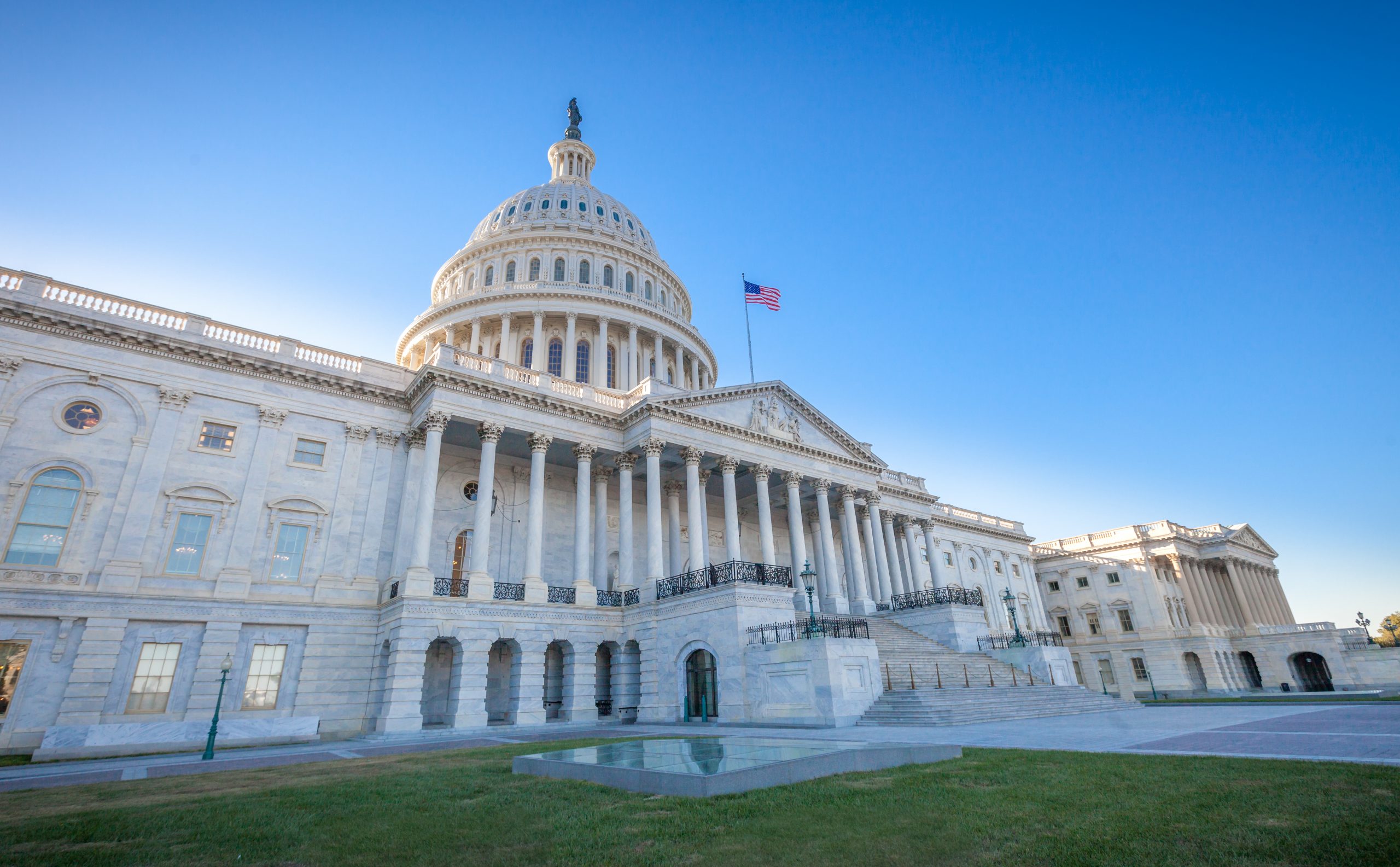Leadership Development and Organizational Excellence
How Nonprofits are Navigating the Uncertainty of the Pandemic
The most vulnerable members of society have also been the hardest hit by the ramifications of the COVID-19 pandemic. The work of nonprofit organizations serving those populations continued largely uninterrupted over the past several months—despite sparse protective gear for staff, thinly-stretched funds, and minimal to no national guidance about how to safely proceed.
Behavioral health centers, foster care services, homeless and women’s shelters, and many other human and social services organizations have not shut down. They have been navigating urgent and rapidly changing issues on the fly to keep their essential staff safe as they deliver critical services.
The Council on Accreditation (COA) discussed the changes and challenges of recent months with eight of our Sponsoring Organizations, which are nonprofit membership bodies comprised of organizations that provide human and social services (many of whom are accredited by COA). Sponsoring Organizations serve as critical advisors to the COA, helping us understand the accreditation needs of provider agencies, industry trends, and environmental challenges within the human and social service landscape. Since the start of the COVID-19 pandemic, they have played a central role in helping their member agencies figure out how to safely continue operating in unfamiliar terrain.
We wanted to take a moment to recognize their work and highlight the innovation and creativity that emerged during this difficult time. Their stories illustrate best practices in “continuous evolution” and “resilience” that help organizations push through difficult times.
Shifting priorities
High levels of uncertainty have been a constant since March. Every organization has had to re-evaluate priorities and re-direct resources accordingly.
“One of the biggest lessons we’ve learned from the past few months is the concept of truly listening to members. Never has that been more critical,” said Mohini Venkatesh, Vice President of Business Strategy at the National Council for Behavioral Health (National Council). “We had to figure out how to represent the full continuum of experience of our members —from those serving wealthy communities to the underserved—in an environment where everyone’s experience was highly variant and changing fast.”
High-frequency membership surveys and town hall meetings facilitated by the CEO of National Council helped them keep the biggest challenges facing members front and center. Members’ inability to access to personal protective equipment (PPE) surfaced as a high priority early on. A survey of its members found that nearly 83% of behavioral health organizations did not have enough PPE for two months of operations.
When National Council put out a mass call to its members about PPE, it received requests for roughly 2 million masks within 48 hours. Although completely outside of its normal focus, National Council moved quickly to find a manufacturer and contractor that could fulfill and distribute its’ members PPE order.
The Network of Jewish Human Service Agencies (NJHSA) also went into action to provide PPE for its members after hearing safety concerns from agencies that interact with high-risk senior populations and hospice patients. It collaborated with several other organizations to do a group bulk purchase of PPE.
Catholic Charities USA (CCUSA)who serves millions of people per year, has distributed $6.1 million to agencies for COVID-19-related disaster grants and helped providing PPE, delivering almost 2 million face masks, 650 gallons of hand sanitizer, and gloves, masks, shields, and gowns. Across their network of facilities, they have seen a 50%-70% increase in clients seeking assistance including a broader demographic than low-income and poor households that traditionally walk through their doors including an increase in middle-class families who lost their jobs as the pandemic surged.
Rapid coalition-building
Collaboration was also central to the work of the National Foundation for Credit Counseling (NFCC), a nonprofit financial counseling organization, as states started to lockdown. With many Americans facing sudden unemployment or a dramatic reduction in work hours, financial stresses were running high – people needed short-term relief from paying credit card bills, mortgages, and other debts.
NFCC recognized that consumers needed an immediate short-term solution, regardless of where they sought counseling. They took a lead role in collaborating with other nonprofit credit counseling agencies, credit card issuers, lenders, and regulators to develop a national emergency payment relief program. The program allowed consumers to skip payments without penalties or damage to their credit rating.
“We experienced five years-worth of progress in a period of five weeks,” said Bruce McClary, Vice President of Marketing for NFCC. “It would have been an impossible goal to achieve if we had not already built strong relationships with key industry stakeholders and developed a solid communication framework.”
Facilitating communication and problem-solving
One of the top priorities for nearly every organization we interviewed was facilitating communications between its members to problem-solve.
The Alliance for Strong Families and Communities (Alliance), which is comprised of a variety of nonprofit human services organizations and state associations, initiated regular pulse surveys to assess members’ most immediate needs. The lack of guidance about how to deal with rapidly changing COVID-19 developments was a major stress point.
“Being nimble and taking risks with our communication strategies was crucial,” said Lenore Schell, Senior Vice President of Strategic Business Innovation at the Alliance. “Our guiding principal was to act as the facilitators, not the experts. We launched webinars in the early stages of the pandemic knowing we had few answers to provide, but it created an environment of trust for dialogue with and between members.”
The Association of Children’s Residential Centers (ACRC) also positioned itself as a communications hub for its members, which are residential centers for children. They couldn’t close down services and had to quickly figure out how to keep residents and staff safe in a setting where it is nearly impossible to social distance.
“Meeting the needs of behaviorally challenged young people is already tough work. And the COVID-19 pandemic created additional complexity at every level,” said Kari Sisson, Executive Director of the ACRC. “We quickly realized that the field needed a way to safely exchange information to develop policies, procedures, and best practices – and learn from others’ experiences.”
Affinity groups that were created before the pandemic served as a critical information-exchange for members. An affinity group that served kids with autism and severe brain injuries was able to learn a great deal from an agency in Massachusetts that was hit hard by COVID-19 – it helped peers think through how to plan for adjustments to family visit polices, establishing isolation units, and other safety issues.
Providing opportunities for peer collaboration became an immediate focal point for the Child Welfare League of America as well; it is comprised of agencies that serve vulnerable children and families. In the early stages of the pandemic, they gathered a small group of agencies from the hardest-hit states including New York and Washington to discuss challenges and lessons learned. CWLA also initiated “open mic” weekly conversations to let all member agencies voice their struggles and exchange information about what was working.
“We became a funnel for information for the industry, helping members navigate how to put new policies and protocols into place,” said Julie Collins, Vice President of Practice Excellence for CWLA. “We are still receiving daily inquiries from agencies about how others are dealing with specific issues.”
CWLA shared the intelligence from its various forums with its entire network of members via webinars and best practice newsletters. Topics spanned a wide range of issues from helping foster parents manage e-learning to guidance on recruiting and training staff virtually to establishing protocols for an employee that tests positive for COVID-19. They also arranged for Congressional representatives to hear directly from small agencies about their concerns.
Advocating change
As the COVID-19 lockdown hit different parts of the U.S., health and human service agencies had to abruptly transition as much as possible to virtual mode, often with little warning. Telehealth services suddenly became the norm instead of the exception.
“Initially, the government and insurance providers were only allowing telehealth services that used both video and audio capabilities. We had to help our agencies fight for allowing telephone-only services,” said Reuben Rotman, CEO and President of Network of Jewish Human Service Agencies (NJHSA). “There are big segments of the population that don’t have access to a computer or the internet, or they simply don’t know how to use it.”
For example, one of the agencies under NJHSA was working with a patient suffering from agoraphobia who had not left her house for nearly a year. Her therapist was able to counsel her via Zoom sessions – a more relaxing environment for the patient – and actively workshop steps that reduced her anxiety about getting into her car.
Although shifting to telehealth so quickly presented numerous challenges, it is also brought to light the effectiveness of alternative approaches.
“Telehealth is helping agencies live the true value of person-centered care – delivering treatment remotely to those who prefer that option,” said Venkatesh of National Council. “While many questions linger, the rapid deregulation of telehealth opened the flood gates. It’s clear that virtual services have great value, and we’ll need to help regulators understand the need for a hybrid model moving forward.”
Nancy Ronquillo, CEO of Children’s Home Society of America, the oldest network of child-welfare agencies in the U.S., said that their members expressed similar sentiments about shifting to virtual visits and counseling with families. “For some families, doing a 15-minute phone call a few times per week instead of a one-hour home visit with an agency worked much better,” said Ronquillo. “When agencies were freed from their traditional boundaries, it helped them test and realize how alternative strategies can work better for some kids and families.”
Acting quickly
Health and human service agencies were overwhelmed with the logistics of managing day-to-day operations, leaving little room for them to process new developments. Many of the organizations we interviewed took on this “processing” role, serving as a source of clarity on fast-moving critical issues.
When the U.S. Small Business Administration announced details about the Paycheck Protection Program (PPP) loans, Children’s Home Society of America provided immediate guidance to its members so they could quickly plug into the application process. They also facilitated one-on-one calls between CEOs of its member agencies to troubleshoot the nuts and bolts of working with banks on the loans.
At (CCUSA), they have continued to push throughout the pandemic for the availability of stimulus funds and increased funding for programs like the Emergency Food and Shelter Program to support the most vulnerable of populations.
The Alliance sent communications about PPP almost daily, highlighting key details about eligibility, deadlines, and how the process worked. Many of the Alliance’s members said that without those communications, they would have missed out on the PPP loans.
Looking ahead
Uncertainty continues to linger for the foreseeable future. Short-term changes are putting long-running challenges into sharp focus, giving nonprofit organizations a chance to think more creatively about how they deliver value to those they serve. We are inspired by the spirit of collaboration and resilience within the nonprofit world to continue to serve while tackling unforeseen challenges.
COA’s President and CEO, Jody Levison-Johnson recognizes that COVID-19 has been and will continue to be a game changing experience. “COA is continuing to evolve to ensure that our standards and processes provide the greatest impact on the people and communities served by human and social service organizations. We thank the entire COA community for all of the work being done during these challenging times to ensure the continuity and quality of service delivery to the most vulnerable of populations.”
If we can be of any assistance, please let us know how we can help.


